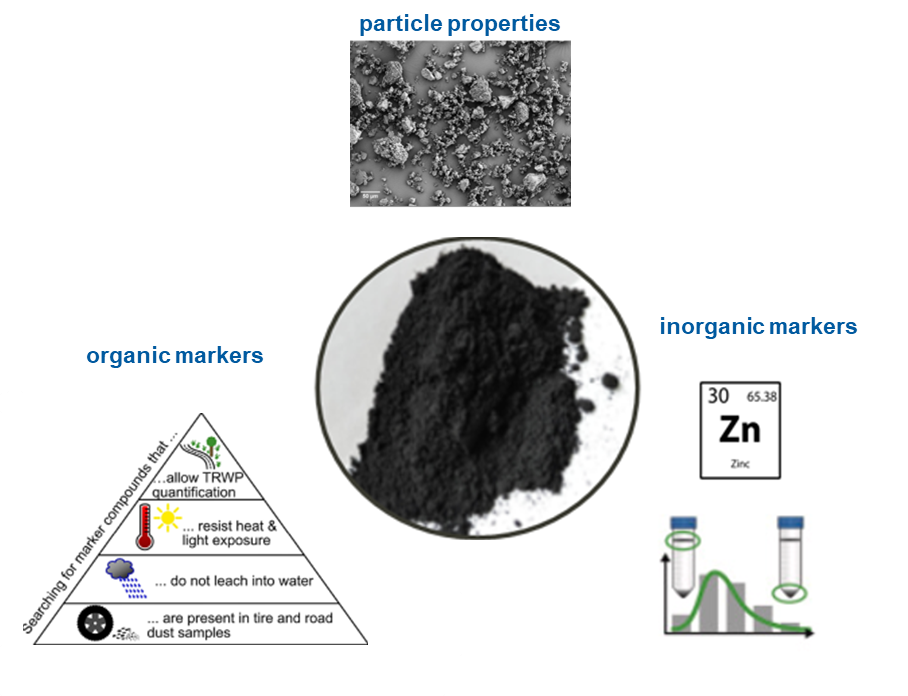Tire and road wear particles
Tire abrasion is expected to be the single largest source of polymers particles in the environment. Emissions of the resulting tire and road wear particles (TRWP), aggregates of tire and road material, are estimated between 1 and 2 kg/y for each citizen in Germany. Yet methods to accurately and sensitively assess the presence, distribution and sinks of these particles in the environment are poorly developed. We develop and utilize methods based on zinc as well as on organic markers to study the environmental occurrence, distribution, transport, removal and aging of TRWP in laboratory experiments and under environmental conditions.
Projects:
Andromeda
Tire Industry Project 2/3
AirPlast
Contributing scientists:
Thorsten Reemtsma
Bettina Seiwert
Aurelio Foscari
Steffen Weyrauch
Limei Han
Daniel Zahn
 Tire and road wear particles
Tire and road wear particles
Publications:
[1] Wagner, S., Klöckner, P., Reemtsma, T. (2022): Aging of tire and road wear particles in terrestrial and freshwater environments – A review on processes, testing, analysis and impact, Chemosphere 288, Part 2, art. 132467. DOI: https://doi.org/10.1016/j.chemosphere.2021.132467
[2] Klöckner, P., Seiwert, B., Wagner, S., Reemtsma, T. (2021): Organic markers of tire and road wear particles in sediments and soils: Transformation products of major antiozonants as promising candidates, Environ. Sci. Technol. 55 (17), 11723 – 11732. DOI: https://doi.org/10.1021/acs.est.1c02723
[3] Klöckner, P., Seiwert, B., Weyrauch, S., Escher, B.I., Reemtsma, T., Wagner, S. (2021): Comprehensive characterization of tire and road wear particles in highway tunnel road dust by use of size and density fractionation, Chemosphere 279, art. 130530. DOI: https://doi.org/10.1016/j.chemosphere.2021.130530
[4] Klöckner, P., Reemtsma, T., Eisentraut, P., Braun, U., Ruhl, A.S., Wagner, S. (2019): Tire and road wear particles in road environment – Quantification and assessment of particle dynamics by Zn determination after density separation, Chemosphere 222, 714 – 721. DOI: https://doi.org/10.1016/j.chemosphere.2019.01.176
